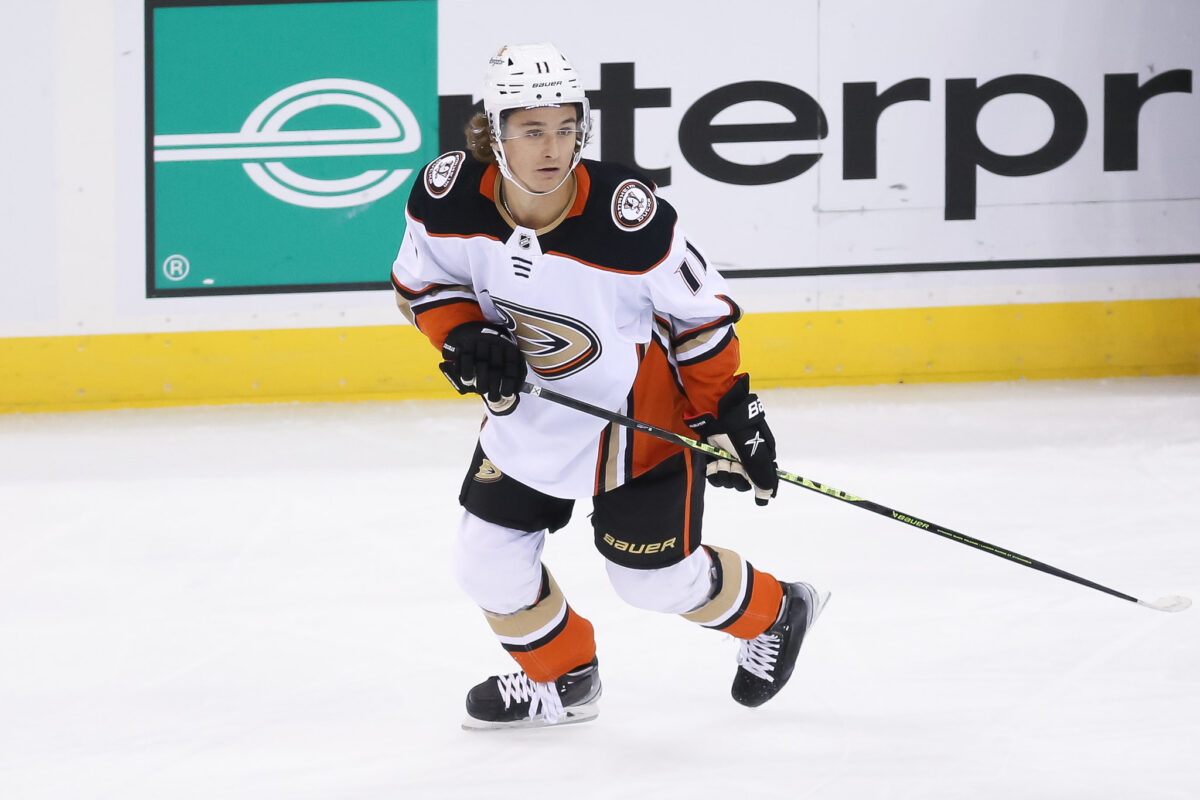The Anaheim Ducks are only six games into the 2024-25 regular season, but a familiar feeling is seeping in — the feeling of watching a club that’s gone 50-97-17 over the previous two seasons. The offense is anemic, special teams are ineffective, and the shot totals are tilting heavily in favor of their opponents.
Related: Ducks Embrace Orange County Culture With New Goal Song
At 3-2-1, their point pace would be the team’s highest total since the 2017-18 season. But this scene has been played out in seasons past when the Ducks kept a decent record for about a month before the lopsided possession numbers eventually overwhelmed their goaltending. Expectations surrounding the club aren’t high this season from a standings perspective, but there are expectations surrounding player development. It’s early, but even the thought that some of these young players may be plateauing at this stage of their rebuild is concerning.
Ducks’ Special Teams Underwhelming
In my bold predictions column released before the season started, I predicted Anaheim’s power play would make the jump to league-average territory. The continued development of Pavel Mintyukov with the addition of Cutter Gauthier’s shot seemed like a boost for a unit that only converted on 18.3% of their chances with the man advantage last season. Anaheim went scoreless on their first 17 power plays of the season and is only at 13% after a 2-for-6 effort against the San Jose Sharks on Tuesday night (Oct. 22).
The Ducks hired Richard Clune in the offseason specifically to address the power play issues. While any new system takes time to implement, early returns aren’t positive. Zone entries, even with the extra skater, have been a challenge. Puck handlers rarely look comfortable and cede possession at the first sign of pressure.
This isn’t a personnel issue — Mintyukov, Troy Terry, Leo Carlsson, Trevor Zegras, Mason McTavish, and Olen Zellweger are among the ice-time leaders on the power play. It’s too early to consider anything a failure, but there’s too much talent on the roster to have a power play go scoreless for nearly 30 combined minutes.

On the other side of special teams, the Ducks’ penalty kill is at 81.25% which puts them around the middle of the league. That is an improvement over a 31st-ranked 72.42% from a season ago, but it still impacts games. Their successful two kills against the Los Angeles Kings on Oct. 20 ended a three-game streak of allowing a power play goal — two of those games went to overtime, and the third was a one-goal game until an empty-netter.
However, their biggest improvement has been committing penalties in the first place. Nobody was penalized more than Anaheim last season with nearly 40 more shorthanded sequences than the next-closest Florida Panthers. That lopsided workload led to 91 power play goals scored against them — over a goal per game in an 82-game season. Better discipline will be necessary for the Ducks to stay competitive. Brian Dumoulin and Robby Fabbri are the only new additions to a penalty-killing group that couldn’t handle last season’s parade to the penalty box.
Lopsided Shot Totals Burn Dostal
Another concerning trend over the last few games is the shot discrepancy. Anaheim’s been outshot 85-34 over the prior two contests. They only recorded 14 shots against their rival Kings with backup Dave Rittich in net. Los Angeles won, 4-1, but the game stayed in reach until a pair of empty-netters blew it open. It will go down as one of what will likely be many losses this season, but a better team would see it as a missed opportunity for standings points. It was a winnable game, but not with only 14 shots.
At some point, the heavy shot total begins to weigh on the goaltending. John Gibson has usually been the one to see this massive workload, but it’s falling squarely on Lukas Dostal while Gibson remains sidelined. Fortunately, Dostal has met the task so far, but he needs more out of the skaters in front of him. Possession numbers paint a concerning picture. Sample sizes are small, but their 42.83 Corsi For percentage (CF%) puts them in the territory of the 2022-23 Ducks team that finished with 23 wins and a minus-129 goal differential.
Issues Fall on Cronin Eventually
The NHL head coaching carousel might be the most volatile in North American sports. Case in point, Ducks head coach Greg Cronin has been behind the bench for 87 games, and in that time 16 coaching changes have happened around the league. Cronin isn’t expected to lift Anaheim into playoff contention this season, but his background in player development was important for this young roster.
If the Ducks continue to plateau, it’s hard not to see a scenario where Cronin isn’t on the hot seat. Former Duck Ilya Lyubushkin’s comments about Cronin and the locker room atmosphere have already planted seeds of concern as to whether the first-time NHL head coach has the players’ support.
Unless a coaching change becomes necessary, it’s unlikely the Ducks move on from Cronin in the middle of the season. The organization appears to have a succession plan in place with Matt McIlvane. He was hired to coach the San Diego Gulls of the American Hockey League in the same offseason Cronin was hired. The 38-year-old coach has a sparkling resumé from the Deutsche Eishockey Liga (DEL) in Germany and also has a strong background in player development. While in San Diego, he’s gaining additional experience while coaching the next crop of prospects.
With over 70 games left on the schedule, the Ducks have plenty of runway for improvement. Even if the team continues to lose, the players need to continue to develop.
Data courtesy of Hockey-Reference. Advanced stats courtesy of Natural Stat Trick.
